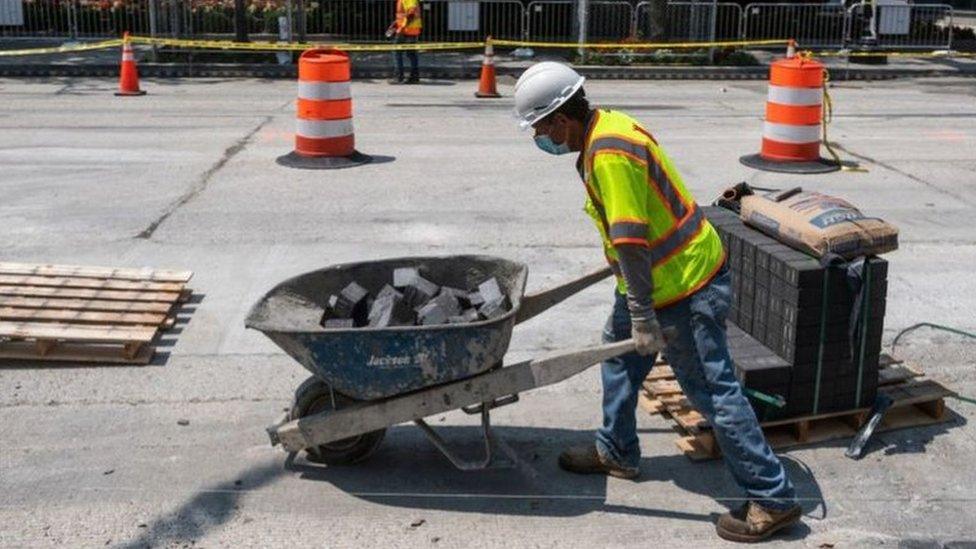US mortgage rates have hit a two decade high of 8%
- Published

Americans hoping to borrow money to buy a house or apartment are facing mortgage rates at the highest levels in more than 20 years.
The average interest rate on the typical 30-year, fixed rate home loan rose to 8% for the first time since 2000, according to Mortgage News Daily, which tracks rates.
The US central bank, the Federal Reserve, has been raising interest rates to try to bring down inflation.
That has pushed up borrowing costs.
Rates are up by nearly half a percentage point in just the last two weeks.
The last two years has seen a ratcheting up of interest rates, the most common strategy from central banks to curb how fast prices rise.
But in recent weeks, mortgage rates have also been affected by big swings in demand for US government debt, which is sold to investors in the form of US Treasuries.
Political chaos in Washington and rising US debt levels raised doubts about investors' ongoing appetite for buying US debt. That prompted prices of Treasuries to fall, boosting yields - moves that have hit mortgage rates as well.
Matthew Graham of Mortgage News Daily said markets were "increasingly willing to react" to events that were likely to have implications for government borrowing.
He said that the latest jump in mortgage rates may have been sparked by expectations that President Joe Biden is calling for "big spending on overseas war efforts".
"In a rising rate environment where long term boundaries have recently been broken, it doesn't necessarily take big news in order to say things like 'highest mortgage rates in 23 years'," he said.
The housing market in the US has already been hit hard by the rise in mortgage rates, which hovered around 3% just two years ago.
Sales of existing homes in August were down 15% compared with a year earlier, as buyers dropped out of the market and homeowners enjoying low rates stayed put, according to the National Association of Realtors.
But house prices have yet to fall. They were up nearly 4% that month, as demand outpaced supply.
Many analysts have said they do not expect the US central bank to raise interest rates much higher, pointing to price increases that have slowed significantly since last year.
The inflation rate, which measures the pace of price increases, dropped to 3.7% in September.
But investors have been unnerved in recent days by unexpectedly strong economic data.
That has raised fears the Fed could have more work to do to bring inflation back to its 2% target and could keep rates higher for longer than expected next year.
The Federal Reserve's target for its key rate - which helps set borrowing costs for mortgages, credit card debt and other loans - now stands at a range of 5.25%-5.5%, up from near zero in March 2022.
Related topics
- Published5 April 2023

- Published12 October 2023

- Published6 October 2023
